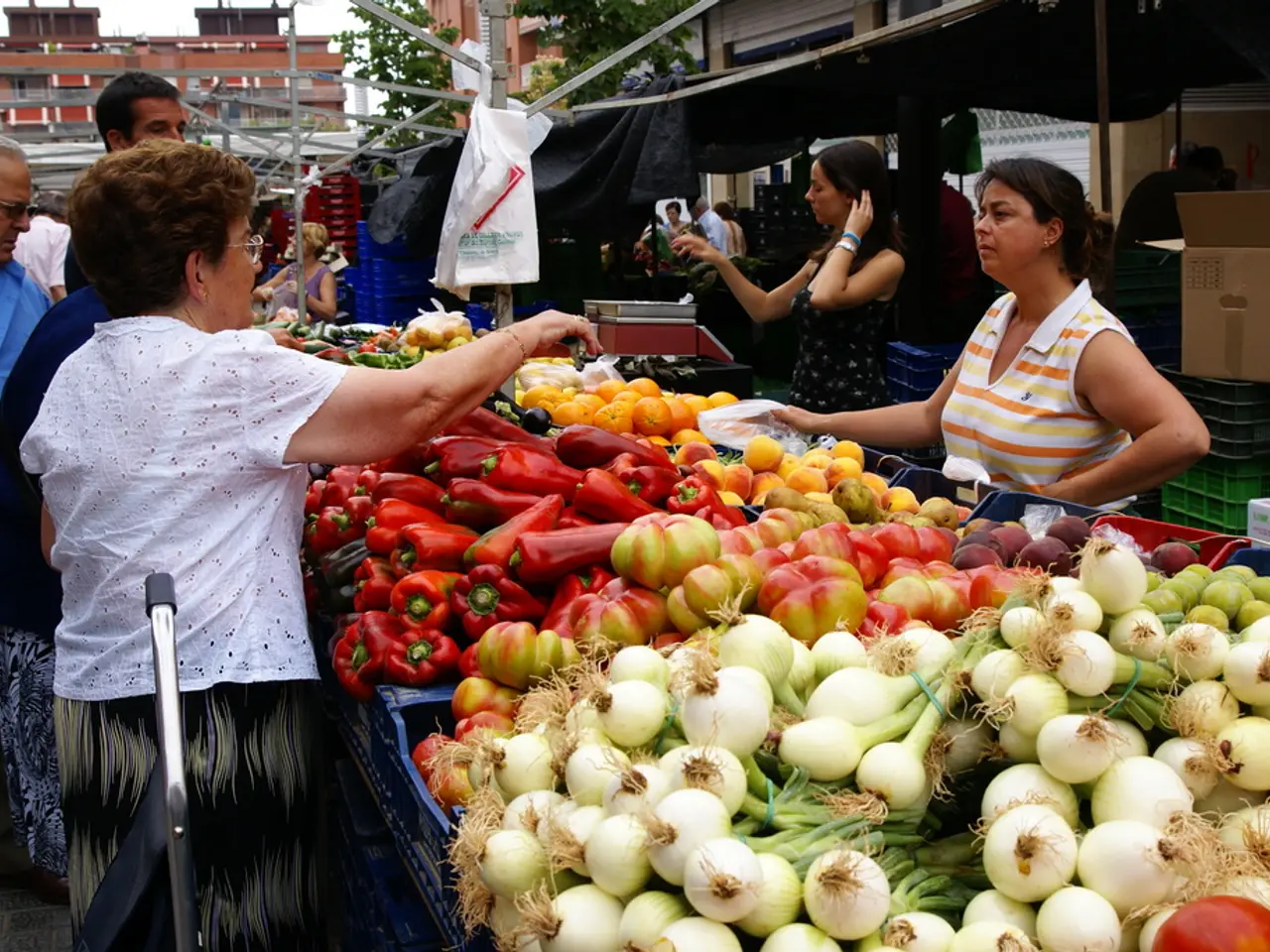Reducing Carbon Footprint through Gardening: Fact or Fiction?
In the ongoing battle against climate change, every small step counts. One such significant step is embracing sustainable gardening practices, which can help lower carbon footprints and mitigate greenhouse gas emissions.
Carbon Storage in Soil and Plants
Perennial plants, with their deep and extensive root systems, play a crucial role in this mission. They build soil organic matter, creating durable carbon sinks by drawing carbon into the soil and reducing erosion. The advantage of perennials over annuals lies in their ability to avoid yearly soil disturbance, which releases carbon[1]. Regenerative gardening practices further enhance soil health, increasing its capacity to capture and hold carbon over time[5].
Lower Resource Consumption
Sustainable gardening also reduces the need for repeated planting, irrigation, synthetic fertilizers, and tillage. These reductions minimize emissions tied to energy use, manufacturing, and chemical inputs[1][2].
Improved Soil and Air Quality
Practices like composting recycle organic waste, enriching soil fertility and biology, which supports long-term carbon cycling and reduces landfill waste emissions. Efficient water use lowers energy for irrigation while organic pest management avoids synthetic chemicals linked to emissions[2].
Reduced Reliance on Industrial Agriculture
Community and urban gardens that encourage seasonal eating and local growing reduce greenhouse gas emissions associated with industrial food systems, transportation, and storage[3].
Use of Renewable Resources
Some modern sustainable gardening technologies use renewable biomass (e.g., wood waste) for carbon-neutral heat and CO2, limiting fossil fuel use and emissions in horticulture[4].
Growing Your Own Food
Growing one's own food can significantly reduce the carbon footprint by minimizing long-distance shipping of fruits and vegetables.
Transforming Lawns and Gardens
Diminishing the size of a lawn by planting eco-friendly ground covers can reduce greenhouse emissions and provide food and habitat for beneficial insects and animals. Planting a variety of favorite foods in the garden, starting seeds instead of purchasing veggie starts, can further reduce carbon emissions.
Reducing Peat-Based Soil Mixes
Reducing the use of peat-based soil mixes can prevent the release of greenhouse gasses during harvesting.
Integrated Pest Management
Implementing an integrated pest management program can minimize the use of toxic formulas and develop a year-round approach to pest management. Adding herbs and edible flowers to the garden can provide benefits for recipes, eye appeal, and pollinators.
Recycling and Reuse
Many nurseries will take and recycle plastic plant containers and flats. Harvesting gray water can be used for plant irrigation. Making compost at home can minimize debris in landfills and serve as a rich soil additive.
Reducing Plastic Emissions
Plastics emit 3% of global greenhouse gas. Reducing or suspending the use of single-use plastic can have a significant impact.
In conclusion, sustainable gardening techniques form a holistic approach that both captures atmospheric carbon and reduces the emissions generated by conventional gardening and food production systems, contributing to climate change mitigation[1][2][3][5]. By adopting these practices, we can make a difference, one garden at a time.
[1] IPCC, 2019: Climate Change and Land: An Inter-Sectoral Scientific Assessment. Contribution of Working Group II to the Fifth Assessment Report of the Intergovernmental Panel on Climate Change [R. H. M. Swart, C. B. Field, S. R. H. Karim, E. F. M. Lokke, M. O. Mastrandrea, K. L. B. Pekker, A. E. P. Riahi, Y. Tamaki, and S. Y. Yamaguchi (eds.)]. Cambridge University Press, Cambridge, United Kingdom and New York, NY, USA.
[2] Tilman, D., Clark, M., Lehman, C., and Naylor, R. (2011) Agriculture and the environment: finding sustainable solutions. Science, 333(6046), 1513-1515.
[3] Garnett, T., Lang, T., Macdiarmid, J., Mepham, J., Pretty, J., and Worsley, A. (2009) Climate change and food: the role of food systems in the UK's carbon emissions. Phil. Trans. R. Soc. B, 364(1528), 1589-1601.
[4] FAO (2011) The future of food and agriculture: climate change, biodiversity loss and nutrient depletion. Food and Agriculture Organization of the United Nations, Rome, Italy.
[5] Lal, R. (2004) Soil carbon sequestration impacts on global climate change and food security. Science, 304(5677), 1623-1627.




